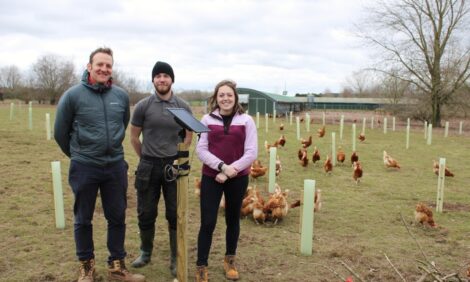



Download the New RB209 Today, AHDB Recommends
UK - The new AHDB Nutrient Management Guide (RB209) is now available to download as app and interactive digital versions.The guide, which is being launched this morning (24 May) at the Grassland & Muck event, offers best practice guidance on the application of mineral fertilisers, manures and slurries to crops and grassland.
It is the culmination of a £98,000 project, supported by £200,000-worth of in-kind funding by industry, to review the former Fertiliser Manual (RB209), which was last updated in 2010.
Its revision was overseen by the AHDB-led UK Partnership for Crop Nutrient Management and delivered by an ADAS-led consortium of experts from across the UK research community.
Dr Susannah Bolton, AHDB Knowledge Exchange Director, said: “This project underpins AHDB activity across a number of sector strategies, demonstrating the pivotal role we play in providing farmers and growers with key tools and information to improve their productivity.”
The updated edition is split into seven colour-coded sections, so users can cherry-pick relevant information and individual sections can be updated more easily to reflect the latest research.
These are:
- Principles of nutrient management and fertiliser use
- Organic materials
- Grass and forage crops
- Arable crops
- Potatoes
- Vegetables and bulbs
- Fruits, vines and hops
George Lawrie, Kinross cereals grower and Chair of the partnership’s steering group, said: “Crop nutrition is one of the key elements to optimising production in the field and growers need to use all the tools available to ensure that they manage resources, in terms of soil, applications and plant health.
“This new version of RB209 is one such tool. Its recommendations are based on the most up-to-date science and so offer clear guidance to growers on a whole range of crops from cereals to grass to ornamental bulbs.”
Benefits of using the digital version over the printed copies include automatic updates and alerts, the ability to save notes, easier navigation and integrated multimedia content.
With quick and easy access to videos, information and recommendations from the guide, it is practical for use in the field and will always be the latest version available – plus it’s lighter to carry and doesn’t need an internet connection once downloaded.
Available on iOS and android, the app can be found by searching for RB209: Nutrient Management on the App Store or Google Play. The guide can also be downloaded as an iBook from the AHDB website.
Key changes for farmers growing grass and forage crops
Nutrient recommendations for grass and forage crops are now presented in Section 3, with the inclusion of guidance on how to use the field assessment method to calculate Soil Nitrogen Supply.
Grassland nitrogen recommendations have been revised to focus on target yield of grass production without linking to particular animal production systems (dairy, beef or sheep), milk yield, stocking rate or concentrate use.
Whole season nitrogen requirements and nitrogen application sequences are provided separately for cutting and grazing situations. The total nitrogen recommendations can be adjusted according to Soil Nitrogen Supply (SNS), Grass Growth Class (GGC) and seasonal rainfall. The recommendations for nitrogen use in autumn grass establishment has been increased.
There have been no changes to phosphate and potash recommendations for grazing, silage or hay systems. Minimum changes have been made to nutrient recommendations for maize and wholecrop silages.
The nutrient recommendations for swedes, turnips, rape and kale have been altered to reflect more grazing in-situ, so fewer nutrients are being removed off the field. The nutrient recommendations for fodder beet have been increased due to higher yields being targeted.
Paul Westaway, chair of the livestock technical working group, said: “We are particularly proud of the changes to the nitrogen recommendations for grass as we have made them simpler to use and focused on the yield farmers need to maximise home-grown grass and forage in diets.”
Key changes for farmers using organic materials
Nutrient values for organic materials are presented in Section 2 of the Nutrient Management Guide. Nutrient content figures have been added for goat farmyard manure and farm-sourced and food-based anaerobic digestate. Digested liquid biosolids have been removed.
Nutrient content figures have been updated for horse, cattle, sheep and duck farmyard manure, cattle and pig slurry, biosolids and compost. Nutrient content of poultry manure is presented according to dry matter content.
Mr Westaway said: “For farmers and growers producing and using organic materials, the updated figures in the organic materials section will be very useful when calculating their nutrient and financial values. The changes mean that calculations for organic materials are becoming more accurate.”









